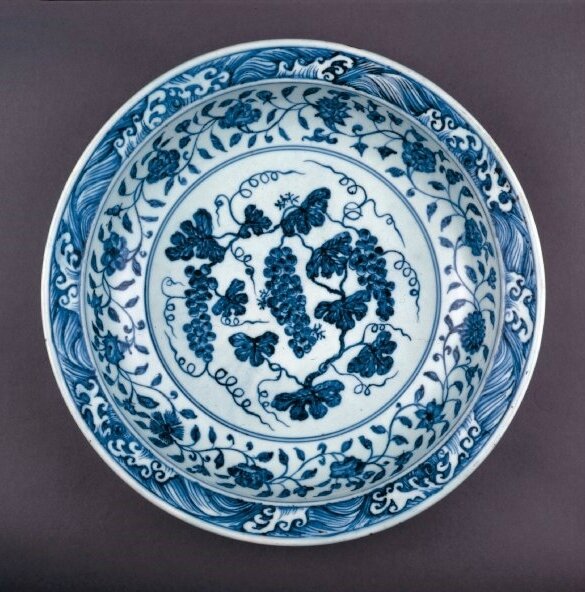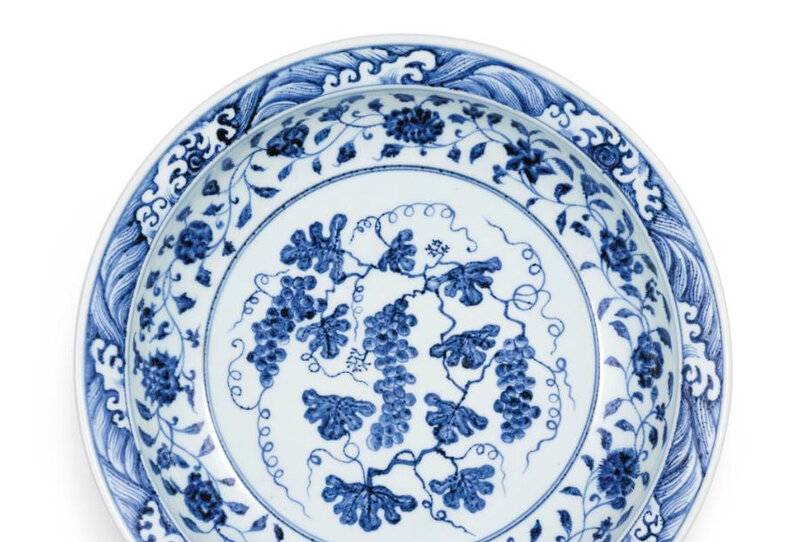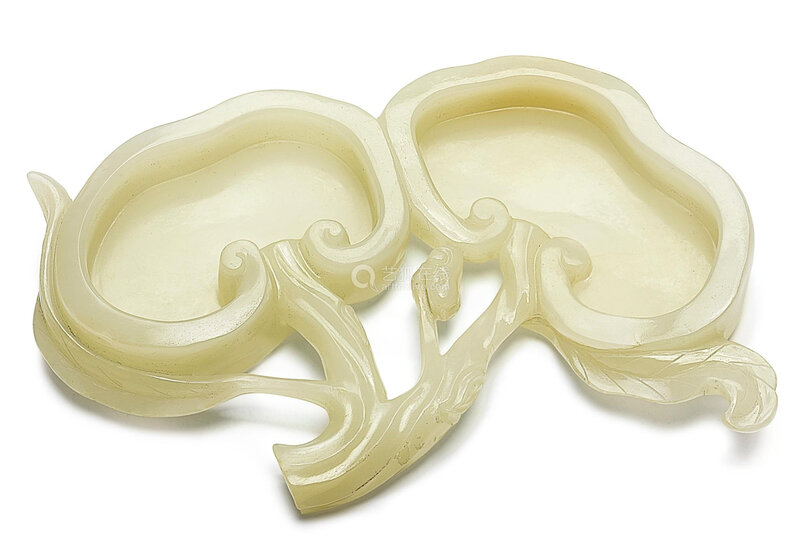Two masterpieces from the Collection of Sir Quo-Wei Lee at Sotheby's Hong Kong, 3 october 2018
Sir Quo-Wei Lee
Sir Q.W. Lee was undoubtedly one of the most remarkable bankers, philanthropists and collectors of his generation. To be taken under his wing in all of these important areas was one of the greatest blessings of my life.
Although the Lee and Lam families had had a close relationship for over seven decades, it was not until the passing of my husband, Paulo Lam Sou-Leung, that I developed a more personal relationship with Sir Q.W. and his family. Sir Q.W. encouraged me to join the Hang Seng Bank after I qualified as a solicitor in 1978. Thereafter he mentored me through my entire banking career, guided me with a firm hand and solidified my pursuit of distinction. Under his tutelage, I came to admire Sir Q.W.’s meticulous attention to detail, always setting a high standard for himself and those around him; and most of all, his tenacious quest for perfection.
Although the Lee and Lam families had had a close relationship for over seven decades, it was not until the passing of my husband, Paulo Lam Sou-Leung, that I developed a more personal relationship with Sir Q.W. and his family. Sir Q.W. encouraged me to join the Hang Seng Bank after I qualified as a solicitor in 1978. Thereafter he mentored me through my entire banking career, guided me with a firm hand and solidified my pursuit of distinction. Under his tutelage, I came to admire Sir Q.W.’s meticulous attention to detail, always setting a high standard for himself and those around him; and most of all, his tenacious quest for perfection.
Sir Q.W.’s extraordinary commitment to excellence was manifested abundantly in all facets of his professional and personal life, but none more so than in his passion for collecting antiques. While he was one of the earliest and most senior members of Min Chiu Society, the group of knowledgeable and respected collectors, he also generously shared his interest with myself and others who were new to antiques. It was with great kindness, patience and enthusiasm that he introduced me to the art of collecting and I am forever grateful to him for opening my eyes and initiating me to the joy of searching for and acquiring antiques across many categories.
Sir Q.W. applied the same dedication to his personal collecting which he displayed in his professional life. During my visits with him to various dealers and the flea markets, I noticed he always examined each object of desire, regardless of its price, with the stringent standards he adopted for anything he approached in life.
Sotheby’s Hong Kong began auctions of Chinese ceramics in 1973 under the late Julian Thompson (1941-2011). Julian was a true academic and connoisseur and he encouraged the local collectors to approach each work of art with rigour and pursue their collecting dreams by bringing top Chinese ceramics and works of art from Europe to Asia. Julian became a good friend and trusted advisor to Sir Q.W. and influenced much of his collecting. When I retired from banking and became Chairman of Sotheby’s Asia, Sir Q.W. and I crossed paths again. He was already on Sotheby’s International Advisory Board, bringing with him his tremendous insight into Chinese antiquities, his understanding of the Asian market as well as his highly regarded business acumen.
This collection to be auctioned at Sotheby’s is notable not merely for its scale and scope but as an unerring reflection of Sir Q.W.’s legendary diligence, and integrity as the consummate perfectionist of his time. Many pieces had been purchased from Sotheby’s in the 1970s to 1980s with guidance from Julian. The Lee Family has generously chosen to honour Sir Q.W.’s friend and advisor Julian Thompson with the proceeds of lot 106 to endow an annual internship at Sotheby’s for able art students from Hong Kong.
Dr Alice Lam
Q.W. Lee as Collector
One day when the local gazetteer of Hong Kong is written, there will be a major entry on the life and work of Lee Quo-Wei, detailing his personal achievements and his many contributions to Hong Kong in public life.
One of Q.W.’s activities not in the public eye was his collecting of Chinese art. Like other collectors in Hong Kong, some of his acquisitions came from international auctions and dealers, but he seldom, if ever, travelled for that. He did it through trusted agents. The greater part of his collection was made personally on weekends on Cat Street (Upper and Lowe Lascar Row). Particularly through the 1970s, one would find him on a Saturday or Sunday sitting and chatting with the owner of one of the older (usually second generation) Cat Street shops – perpetuating the kind of collector-dealer relationship that has largely since disappeared. This scene also demonstrated one of the admirable aspects of Q.W.’s personality - he was totally at ease with anyone from any walk of life on any kind of occasion. Apart from an active interest in art, his Cat Street visits were perhaps also one way of relaxing from his many heavy duties.
Q.W.’s collection also reflects a local tradition. His taste was for fine porcelain of the Ming and Qing dynasties. This had been the case for earlier generations of Cantonese collectors. However, the type of jade carvings in his collection could not have been acquired by earlier generations, simply because they were not available before the end of the Qing dynasty. The carving of sizeable pieces of white jade only began in the reign of the Qianlong Emperor, after he retained the control of Khotan, where the jade came from, in the second half of the 18th century. In the early 20th century, a large number of jade carvings in the style that began in the imperial workshops of Qianlong began to emerge on the market, mostly carved by workers released from the palace workshops. A small number actually came out of the Palace towards the end of the Qing dynasty, and also afterwards until the Government took control of the Forbidden City and established the Palace Museum. Most of the Qianlong-style jade carvings that came out of Beijing in the early 20th century were purchased by American collectors and now in museums. The pieces in Q.W.’s collection are amongst the relatively few items still in private hands.
This catalogue of the sale of Q.W. Lee’s collection is not just the record of another collection. It contains clues to the taste and cultural activities of the man himself and, by extension, the Cantonese tradition of art collection as preserved in Hong Kong through the 20th century.
James C.Y. Watt
Sir Quo-Wei Lee (1918-2013) was known to all as a man of singular vision, wisdom and integrity, a man whose contributions to education, public service and philanthropy remain indelible. In contrast to his legacy of achievements in society, his study was the repository of a quiet and obsessive collecting journey through Chinese art. This lifelong passion began in the late 1950s, when Sir Quo-Wei and his family lived in quaint Village Terrace, Happy Valley, three floors above my grandfather, the Chinese art dealer Edward T. Chow. Lady Lee remembers how this fortuitous encounter sparked his interest in Chinese porcelain and how his neighbour guided him early on. The most prolific period in Sir Quo-Wei’s collecting came in the early 1970s after Julian Thompson, who then headed the Chinese art department at Sotheby’s, brought auctions of Chinese art to the city. The two men shared a love for Chinese porcelain and many of Sir Quo-Wei’s finest pieces were acquired in the 1970s and 1980s, that golden time in the Chinese art market.
The collection spans from the rarest early Ming porcelains to the finest Qing Imperial jade carvings. It reveals an exacting eye particularly sensitive to court taste, yet unceremonious, equally delighting in a baroque wall vase shaped as a luth or an understated late 14th century blue and white cupstand. The collection above all manifests a deep affection for blue and white porcelain in all its declinations, as well as for the purest, most exquisite jades.
This catalogue and the exhibition to follow will provide for the first time an insight into Sir Quo-Wei Lee’s lifelong passion for art. For connoisseurs, this very private collection, rich in its variety and distinct in its character, will no doubt be a revelation. We wish to thank Lady Lee and the Lee family for entrusting us with it.
Nicolas Chow
Chairman, Sotheby's Asia
The Chinese art collection assembled by Sir Quo-Wei Lee (1918-2013) is of superb quality, consisting of over 40 lots of the finest Imperial porcelain and jade, the majority acquired at Sotheby’s London and Hong Kong in the 1970s-80s. Highlights of the sale include a Yongle blue and white ‘grape’ charger and a white jade washer finely carved in the form of a lingzhifungus from the Yongzheng to Qianlong period.
Lot 110. A fine blue and white 'grape' charger, Ming dynasty, Yongle period (1403-1424); 37.3 cm, 14 5/8 in. Estimate 6,000,000-8,000,000 HKD (764,400 - 1,019,200 USD). Lot Sold 7,560,000 HKD (964,354 USD). Photo Sotheby's
very finely potted with rounded sides rising from a short tapered foot to a wide everted rim, superbly painted in rich inky tones of cobalt blue accented with characteristic 'heaping and piling', the interior decorated with a medallion enclosing three pendent bunches of grapes suspending from a gnarled vine issuing broad curling leaves and coiling tendrils, surrounded on the cavetto with a leafy composite floral scroll bearing twelve flowering blooms, including chrysanthemum, lotus, peony, carnation and morning glory, all within a border of crashing waves on the rim, the exterior similarly rendered with a different composite floral scroll of twelve floral blossoms, including a lingzhi bloom, the unglazed base fired with subtle orange specks.
Provenance: Collection of Mrs Gertrude Harriman, wife of Mr Otto Harriman, Dunmurry, Northern Ireland, until 1970.
Collection of F. and H. Hitchman, since 1970.
Sotheby's Hong Kong, 24th November 1981, lot 81.
Note: The elegant design on this dish represents one of the great classic patterns of the Yongle period that demonstrates the developments achieved by Jingdezhen’s potters and painters in the short time period, since blue and white porcelain began to be made there. Indeed, under the Yongle Emperor not only did the quality of porcelain and stylistic sophistication reach unprecedented heights, its value to the court also evolved from that of an exquisite practical item of the imperial household to becoming a commodity with economic and diplomatic potential to the Emperor.
The Yongle Emperor was an outward looking monarch, and his reign was marked by numerous official expeditions abroad. Large dishes painted in underglaze blue were made at the imperial kilns in Jingdezhen, Jiangxi province, where production was carefully monitored. Porcelains here were produced for the court, its specifications defined and quality monitored by the court, and its distribution organised by the court and assured through official channel. While quality control was stringent in this period, so as to make porcelains impeccable, designs were jealously guarded, so no copies could be made by lesser kilns that might be confused with the original and in this way harm the repute and prestige of the product.
Dishes painted with this motif, always featuring three clusters of grapes issuing from a single stem, vary in few but distinct ways: the sides are either rounded or lobed and the rims are straight or barbed. Among surviving examples, the present piece is particularly outstanding for its fine potting, smooth, tactile glaze and lush fruit pattern that beautifully displays the characteristic ‘heaping and piling’ of the cobalt blue – a much-copied trademark of imperial blue and white porcelains from the early Ming dynasty.
Dishes of this design made for the court include one from the Qing court collection and still in Beijing, illustrated in Geng Baochang ed., Gugong Bowuyuan cang. Ming chu qinghua ci [Early Ming blue and white porcelain in the Palace Museum], Beijing, 2002, vol. II, pl. 135, together with a dish of this design with a barbed rim, pl. 133; one in the Shanghai Museum, published in Lu Minghua, Mingdai guanyao ciqi [Ming imperial porcelain], Shanghai, 2007, pl. 1-16; and a third, reputedly given by the Empress Dowager Cixi to Sir Robert Hart, Inspector General of the Imperial Maritime Customs at the Chinese Treaty Ports, on his retirement in 1908.
After an interruption in the Hongwu reign, the Yongle Emperor re-established relations with the Timurid ruler Shahrukh Mirza (r. 1405-1447), which led to frequent mutual exchanges of luxury goods between the two empires, including blue and white porcelains. Dishes of this design formerly in the Ardebil Shrine and now in the National Museum of Iran, Tehran, are illustrated in John Alexander Pope, Chinese Porcelains from the Ardebil Shrine, Washington D.C., 1956, pls 37-39, and in Misugi Takatoshi, Chinese Porcelain Collections in the Near East. Topkapi and Ardebil, Hong Kong, 1981, vol. III, pls A 40-42. Dishes of this design are also found in the Topkapi Saray Museum, Istanbul, illustrated in Regina Krahl, Chinese Ceramics in the Topkapi Saray Museum, Istanbul, London, 1986, vol. II, pls 605 and 606; a dish inscribed with the name of the Mughal Shah Jahan ibn Jahangir Shah (AD 1593-1666) and a date equivalent to AD 1643-1644, from the Avery Brundage collection, in the Asian Art Museum of San Francisco, illustrated in The Asian Art Museum of San Francisco. Selected Works, San Francisco, 1994, p. 106, and sold in our London rooms, 24th March 1964, lot 96.
Further dishes of this pattern include a dish from the Swedish Royal Collections, now in the Museum of Far Eastern Antiquities, Stockholm, illustrated in Oriental Ceramics. The World’s Great Collections, vol. 8, Tokyo, 1982, pl. 213; two from the collection of Sir Percival David, the first, now in the British Museum, London, published in Oriental Ceramics. The World’s Great Collections, vol. 6, pl. 74, and the second, sold in our London rooms, 8th July 1974, lot 190; and another dish, illustrated in Regina Krahl, Chinese Ceramics from the Meiyintang Collection, London, vol. 4, 2010, pl. 1638, and sold in these rooms, 4th April 2012, lot 21, from the Meiyintang collection.

Large serving dish with flowers and grapes, Ming dynasty, Yongle reign, AD1403–1424. Porcelain with underglaze cobalt-blue decoration. Jingdezhen, Jiangxi province, Sir Percival David Foundation of Chinese Art. British Museum. AN926491001. © 2018 Trustees of the British Museum

Large serving dish with flowers and grapes, Ming dynasty, Yongle reign, AD1403–1424, Jingdezhen, Jiangxi province. Porcelain with underglaze cobalt-blue decoration. Sir Percival David Foundation of Chinese Art, PDF.685 © 2018 Trustees of the British Museum

A blue and white 'grape' charger, Ming Dynasty, Yongle period (1403-1424), from the Meiyintang Collection; 37 cm., 14 1/2 in. Sold for 4,820,000 HKD at Sotheby's HongKong, 4th April 2012, lot 21. Photo Sotheby's 2012
Cf. my post: A blue and white 'grape' charger, Ming Dynasty, Yongle period (1403-1424)
The grape motif is comparatively rare on Chinese works of art as the fruit was mainly grown in Central Asia. It was first introduced in the Tang dynasty when the Silk Road enabled a close contact with this region, and re-appeared in the Yuan dynasty, when China again had many economic and cultural ties with the West, before becoming increasingly popular during the Yongle reign.
Lot 109. An exceptional white jade ‘lingzhi’ washer, Qing dynasty, Yongzheng–Qianlong period (1723-1796); w. 18.8 cm, 7 3/8 in. Estimate 2,000,000 — 3,000,000 HKD (254,800 - 382,200 USD). Lot Sold 3,240,000 HKD (413,294 USD). Photo: Sotheby's.
superbly carved, naturalistically worked and well hollowed in the form of a large lingzhi head with two bats perched atop one of its scrolled edges, borne on an intertwining network of gnarled stems in sophisticated openwork forming the base, the whorled curving stems extended to the sides issuing clusters of attendant lingzhi heads and lanceolate leaves around the exterior with further bats in flight, the stone of an even white tone suffused with milky-caramel inclusions predominantly along the upper part of the vessel, wood stand.
Note: The present washer is superbly worked from a creamy and softly gleaming white jade boulder with russet inclusions. Taking the form of a large lingzhi head, its robust and deep sides are complemented by a pair of bats staring at each other across the rim. Worked in relief on the exterior are further lingzhi borne on twisted gnarled stems issuing furled leaves, in various positions for the amusement of the viewer.
The lingzhi fungus, Ganoderma lucidum, was considered the most important of all medicines and a talisman for luck. It is also associated with the virtues of a ruler; classical texts such as Shangshu Dazhuan, Baihu Tong and Ruiying Tu all consider the growth of lingzhi an indicator of good government. The lingzhi motif, commonly found on imperial wares, represents a visual rebus for the wish for longevity, and a virtuous and benevolent rule.
Another jade 'lingzhi' washer from the Pilkington collection was sold in these rooms, 6th April 2016, lot 65. See also another with two lingzhi sold in our New York rooms, 8th October 1983, lot 119, and again in these rooms, 18th May 1989, lot 737.
From the Pilkington collection. A white jade 'lingzhi' washer, Qing dynasty, 18th century; 14.5 cm, 5 3/4 in. Sold for 525,000 HKD at Sotheby's Hong Kong, 6th April 2016, lot 65. Photo: Sotheby's.
Sotheby's. Important Chinese Art from the Collection of Sir Quo-Wei Lee, Hong Kong, 03 oct. 2018, 10:10 AM

/https%3A%2F%2Fprofilepics.canalblog.com%2Fprofilepics%2F1%2F0%2F100183.jpg)
/https%3A%2F%2Fstorage.canalblog.com%2F03%2F02%2F119589%2F96711876_o.jpg)
/https%3A%2F%2Fstorage.canalblog.com%2F11%2F31%2F119589%2F94773502_o.jpg)
/https%3A%2F%2Fstorage.canalblog.com%2F20%2F83%2F119589%2F94772815_o.jpg)
/https%3A%2F%2Fstorage.canalblog.com%2F26%2F72%2F119589%2F75604929_o.jpg)
/https%3A%2F%2Fstorage.canalblog.com%2F59%2F60%2F119589%2F26458628_o.jpg)










/image%2F1371349%2F20240416%2Fob_2a8420_437713933-1652609748842371-16764302136.jpg)
/image%2F1371349%2F20240414%2Fob_83ee65_2024-nyr-22642-0954-000-a-blue-and-whi.jpg)
/image%2F1371349%2F20240414%2Fob_15808c_2024-nyr-22642-0953-000-a-blue-and-whi.jpg)
/image%2F1371349%2F20240414%2Fob_e54295_2024-nyr-22642-0952-000-a-rare-blue-an.jpg)